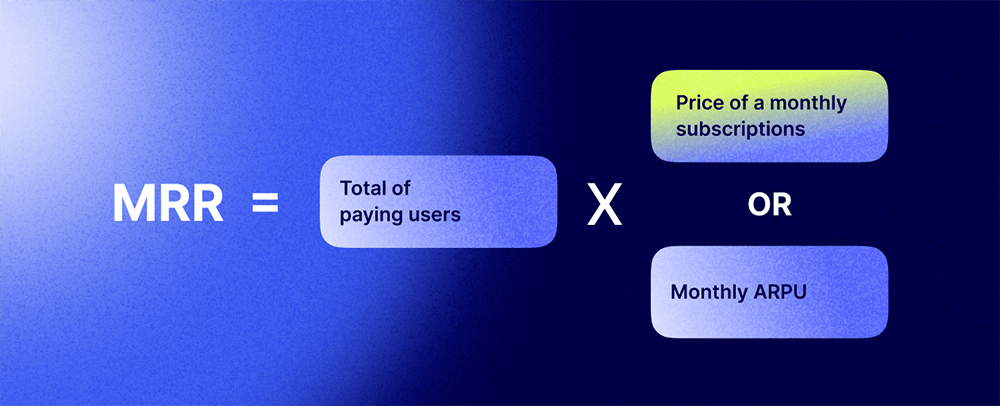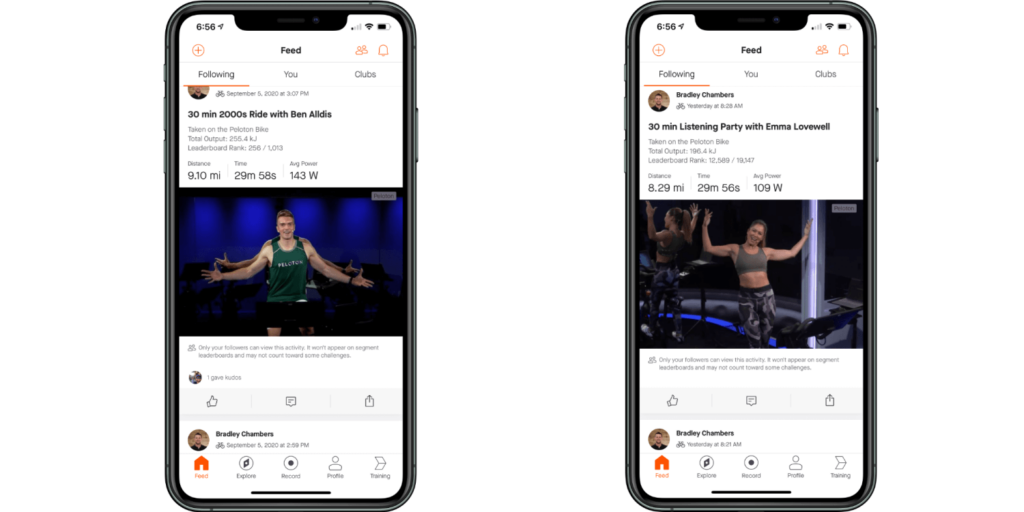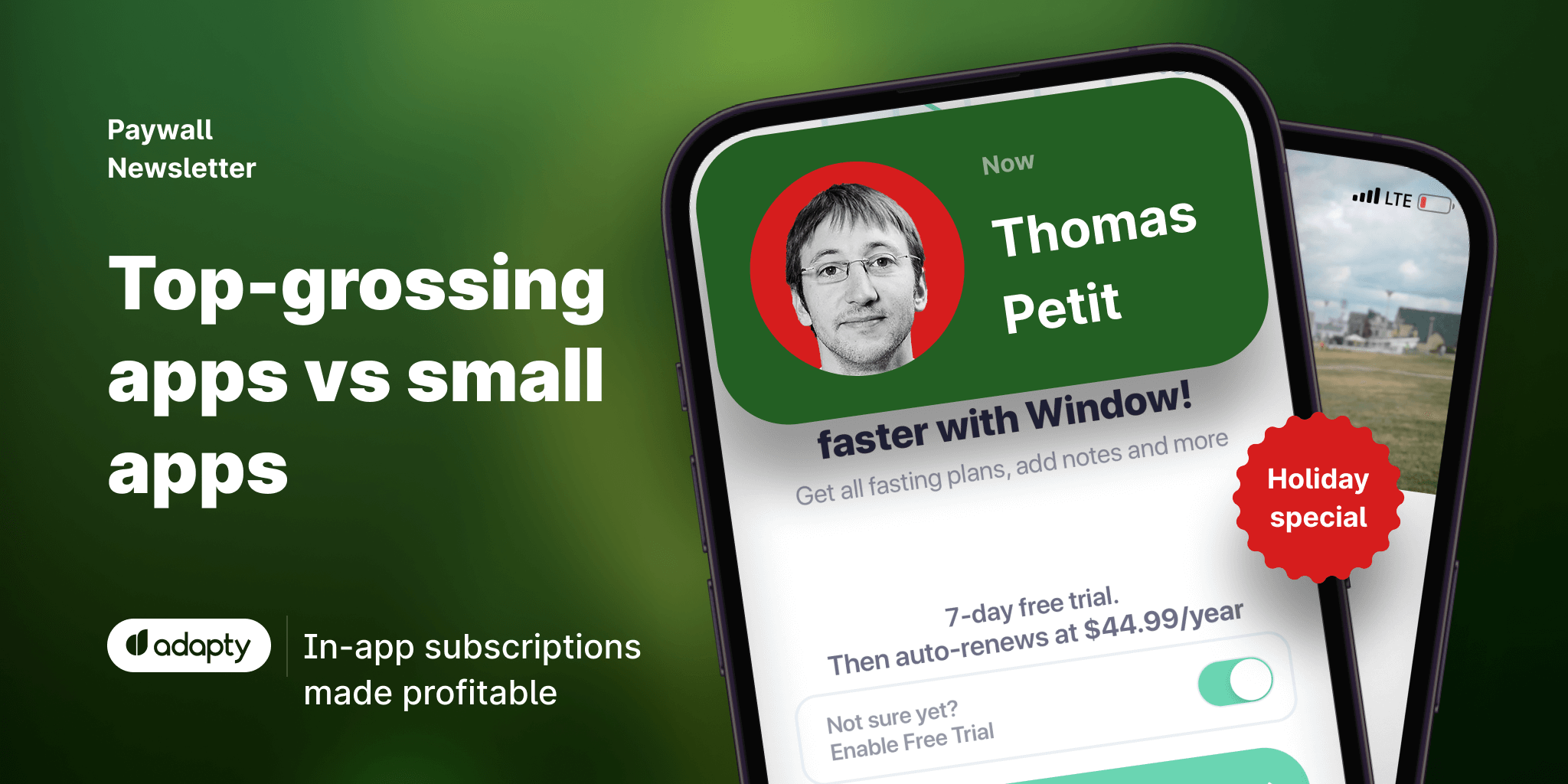Recurring revenue in subscription apps: how to earn a predictable income

May 15, 2023
19 min read

The beauty of the subscription-based app monetization models is that they allow publishers and developers to foresee and plan incoming cash flow. Recurring revenue, resulting from regular user payments, is a far more stable business model, that can be scaled down or up when needed.
However, with factors like customer churn, local prices, and currency fluctuations playing into global instability, predicting and maintaining a steady stream of revenue can be a challenge. This article is our definitive guide on strategies and frameworks on how to test out, introduce, and harness a subscription-based monetization model for your app.
The key subscription app metric: MRR
Any conversation starts with MRR: Monthly Recurring Revenue. It measures the predictable revenue generated by subscription-based products or services over a month. MRR can be calculated by multiplying the total number of subscribers by the monthly subscription price, or, if an app has several offers, by the average revenue per user (ARPU) over a month.

Even though the unit economics for a subscription app is more complex, MRR is the key metric. It provides insight into the company’s financial health and growth potential, as well as the efficacy of its acquisition and retention strategies. By taking MRR quarter-to-quarter or unit-to-unit, you can see which offers are working, and which ones require an update. Speaking of which: let’s see what subscription-based offers you can introduce to your app.
Different types of subscription products
A subscription is a payment made on a regular basis — plain and simple. The value your customer gets in exchange for this recurring payment, however, varies greatly from industry to industry and app to app. Here we list, paired with some examples and insights, the most popular subscription-based app offers.
Prepaid subscription plans
Most offers imply that some part, if not all, of the product, is available only after the payment. However, asking a customer to pay for something they have not yet seen can be a tall order. Later we’ll discuss app monetization strategies in more detail, but for now, just assume that some part of your product needs to be brought in front of the paywall to allure the customers inside.
Pay-per-delivery subscription
The pay-per-delivery subscription model allows customers to pay for each delivery they receive, rather than committing to a fixed monthly or yearly fee. This model offers flexibility to customers as they can choose to use the service only when they need it. At the same time, it generates recurring revenue as customers who use the service regularly will continue to pay for each delivery.
A subscription can be introduced even in this case. For example, a groceries delivery service Everli offers a yearly subscription that makes all deliveries free. For most customers, it’s a simple comparison: is the subscription more expensive than pay-per-delivery? And for the developer, it’s a way to plan revenue.
Streaming subscriptions
The streaming service subscription model involves offering customers access to a library of digital content, such as movies, TV shows, and music, for a fixed monthly or yearly fee. This model has grown in popularity in recent years, as more consumers shift away from traditional cable and satellite TV and towards on-demand streaming services.
A sub-type of this model is media access, where customers of a subscription app are paying for the ability to read or listen to a specific news site magazine, or even just one author. This type of subscription is harder to make profitable, as text content is much easier to download, copy and share with others for free.
To see how media and entertainment brands showcase their features, check out our paywall library. There we’ve collected the best cases from many well-performing services and apps. Trying to reverse-engineer the logic behind some of these decisions, and why they are so successful, is a great way to get inspired for your own revenue-generating products.
Online course memberships
Online and ongoing education is the new norm, with video tutorials, webinars, and interactive courses becoming a part of and even replacing old-school (pun intended) formats. Even better, this type of education can be offered for a recurring fee. Coursera Plus, with its monthly or annual fees, is a prime example.
Interestingly, different people expect different results from the same courses. One video lecture can be reformatted into audio, text, and an interactive quiz, some of which can be offered for a fee. Several tiers can be introduced: not just for access to the course, but for a certificate at the end of a course or for a live conversation with the professor.
Fixed usage
In a fixed usage subscription model, customers pay a predetermined fee for a set amount of a product or service over a specified period of time. This model is often used with VPNs, private clouds and other digital services where the amount of service bought can be quantified and limited. While not strictly a subscription, most apps offer recurring payment options with the number of services (like data to be used with VPN) ‘refreshing’ monthly.
Gift subscription
And for the final touch: all offers we’ve discussed so far can be given as a gift. Usually, those are provided at a lowered price to motivate customers to invite their friends by giving them a subscription as a present. More importantly, after the ‘gift’ period is over, a certain percentage of invited customers may choose to stay with the app, and constitute paying for the subscription themselves.
Even the mobile OSs are on this trend, with both Apple and Android allowing you to share the in-app purchases and subscriptions with your family — here’s our guide, by the way.

Key subscription revenue models
All these models, at their core, have one of three benefits. You as a publisher either choose specific, high-quality goods or services for the user, or make sure of their reliable and stable delivery, or allow the customer to enjoy said services in the first place. The underlying need is time-saving and stability, and the subscription, then, is just insurance that the service will be continuous.
Curation
The curation is about selecting, presenting, and delivering unique products or experiences to subscribers. The developer here is not just a delivery hub, but also a tastemaker. For example, companies like Birchbox and Blue Apron all offer monthly boxes of curated products or experiences to subscribers. Another interesting case is Mubi, a movie streaming service that uploads one new film every day and allows users to stream it just for a month.
Recurring revenue notwithstanding, this model allows to foster a sense of community among subscribers who share similar interests, further increasing customer loyalty and retention. By providing an interesting selection of high-quality content, you can greatly minimize acquisition costs just by motivating your current customers to share their experiences.
Replenishment
The replenishment subscription model is not so much about the contents, but rather about their seamless delivery. Employed even by e-comm giants like Amazon, recurring purchases allow not just to keep the customers loyal, but to greatly minimize the delivery and planning costs, as the itinerary of the orders is available weeks ahead. Companies can also use this model as an opportunity to upsell customers on related products or to offer discounts or promotions to encourage customers to purchase more frequently or in larger quantities.
Access
As discussed before, this type of subscription involves customers paying for ongoing access to exclusive content, products, or services. The access model is often used in media, entertainment, software, and education. Subscription revenue here is generated from the recurring fee for continued access to the content.
The key feature here is the high customer lifetime value. Since customers are paying on a recurring basis, they are more likely to remain loyal to the company and continue having the subscription over time. Developers of such apps have more freedom and cash flow to plan their activities.
Of course, one product can combine several ideas. To check which ones work better, and what specific features are intriguing users to pay for a subscription, you can launch an A/B test with Adapty. Try it out!
Strategies to maximize recurring revenue in subscription apps
Now that we’re done with the theory let’s see how you can update your services to generate and constantly grow consistent revenue. Each app requires a personal touch and a monetization strategy, but some frameworks are universal.
Implementing effective pricing models
Pricing models play a crucial role in any subscription revenue model. They determine how much customers will pay for a product or service on an ongoing basis. Most models can be broken down to be one or a combination of these three:
Freemium is the golden standard of subscription offers: you allow the basic functions of the app to be available to all, and leave some nice extras behind the paywall. Finding the balance between the features necessary and features worth paying for is the keystone of this monetization model.
Tiered pricing provides users with several options to choose from, allocating more perks to pricier solutions. Creating these offers, and positioning them in comparison with each other is an art form and a monetization strategy in itself. The first tier, inspired by the freemium practices, is often free.
The pay-as-you-go model asks a user to pay smaller sums for marginal additions to his plan. This type of offer is easier to sell, as a customer feels like he’s getting his money’s worth. At the same time, it can be more difficult to analyze and foresee, because you can’t predict one’s usage patterns.
Focusing on user retention
Bringing paying customers is important, but not enough. User retention and churn reduction are crucial for maintaining a subscription app’s recurring revenue, as they help to ensure that customers continue to subscribe to a product or service over time. We discuss both metrics in more detail in other articles, but here’s the rundown:
Elevate user experience. People are quick to get used to even the highest-quality services, so make sure you regularly update your app with new and exciting features. Needless to say, every bug is an instant revenue killer.
Offer incentives. Discounts, free trials, and exclusive content help retain customers and reduce churn. Encourage customers to upgrade to a higher subscription level, renew their subscriptions, or refer new customers to the product or service.
Taylor offers to customers. Use targeted messaging to communicate with customers and keep them engaged with your app via in-app messages or push notifications. Highlight new features or promos that are relevant to a specific group of users.
Upselling and cross-selling to existing users
If the new customers aren’t coming at the necessary pace, developers can always work with deepening the quality (often measured as CLTV) of existing users. Analyzing customer data will help to identify patterns and trends in customer behavior, as well as potential upselling and cross-selling opportunities.
For example, developers can analyze what offers are used more often and propose them to retain existing customers. Another cross-selling strategy lies in the ‘people who bought X also bought‘ type of offer, which is now a staple for all e-comm services and subscription apps. Our paywall A/B-testing feature allows you to compare several offers and wordings.
Of course, an important aspect of this is to not come off as too pushy and desperate, as aggressive selling can scare off even currently paying customers.
Expanding through partnerships and integrations
Successful partnerships and integrations are beneficial for boosting audience count and Monthly Recurring Revenue (MRR). Here, the choice of a partner is crucial. You should find somebody whose audience is new to your service, yet is more likely to be interested in it. Here are just some examples of successful partnerships:
Spotify and Hulu formed a partnership with a joint subscription service that includes access to both services. While not direct competitors, brands enjoyed a shared loyal audience.
Salesforce and Slack announced a partnership to integrate their platforms, allowing customers to use Slack’s messaging and collaboration features within Salesforce’s customer relationship management (CRM) platform.
Peloton and Strava integrated their platforms, allowing Peloton users to automatically sync their workout data with Strava’s fitness tracking app. Since both services are used by mostly the same audience, the collaboration was successful.

2024 subscription benchmarks and insights
Get your free copy of our latest subscription report to stay ahead in 2024.
Key metrics to optimize recurring revenue
Any strategy requires having certain goals and a way to know you’ve achieved them. Employing these metrics as key performance indicators will help your subscription-based app quickly reach the desired revenues.
Churn Rate and Customer Lifetime Value (CLTV)
These two metrics are important for measuring the success of your subscription app’s retention and monetization strategies and are essential in calculating recurring revenue.
Churn Rate measures the percentage of ‘lost’ customers. To find it, divide the number of users who canceled their subscription during a given time period by the total number of users at the beginning of that period. For example, if you had 100 customers on May 1st, and 10 of them canceled in the next month, the subscription churn rate would be 10%.
Customer Lifetime Value, or CLTV, measures the total income a customer will bring while using your app. To find it, multiply the average revenue per user (e.g., the cost of a monthly subscription) by the average user lifespan. For example, if the average monthly revenue per customer is $10 and the average customer lifespan is 12 months, the CLTV would be $120.
Average Revenue Per User (ARPU) and Revenue Growth Rate
These two metrics are more about the marginal effectiveness of the current subscription revenue model. Tracking these numbers month-by-month or unit-to-unit helps to identify potential growth zones and make data-driven decisions to explore them.
To calculate ARPU, divide the total revenue by the number of users. For example, if an app generates $10,000 in revenue and has 1,000 users, the ARPU would be $10. Often, brands with the freemium model will divide ARPU and ARPPU (average revenue per paying user) to separate the errors in conversion and retention strategies. Calculating ARPPU is similar, but requires multiplying the total number of users by the share of paying ones.
To calculate the Revenue Growth Rate, divide the difference between the two periods by the revenue in the first period. For example, if a company cashed in $10,000 in January and $12,000 in February, the revenue growth rate would be 20%.
Of course, there are more metrics worth considering. However, these four are crucial, and the way you track them is important as well. Google Analytics and a myriad of Excel files won’t cut it: you need deeply integrated software that not only monitors the data but provides insights into how to harness it and influence the situation for the better. Such services keep popping up monthly, but few offer subscription-focused features as we do.
Conclusion: creating and predicting recurring revenue
Contrary to popular belief, generating revenue is not that hard — rather, keeping it is the challenge. In this article, we’ve shared some ideas and cases on revenue-generating activities, and implementing them into your product is a fairly straightforward task. But how much will you earn, and can you predict this number?
Let’s break it down. Take your monthly subscription price and the number of paying users: take away the store and bank commissions, and you have the monthly revenue. By adding new monthly subscribers and subtracting the monthly churn, you can guesstimate the monthly revenue growth. And constantly working on retention and monetization strategies, as well as employing analytics to raise the share of paying customers, you can maximize the profits while keeping the costs stable.
Unlike one-and-done purchases, subscriptions are about the long-term value not just for the developers, but for the users. Over the course of months and years, customers change, and so should your app. Constantly testing new offers and features and keeping their received worth above the asking price is a sure way to keep users subscribed.
FAQs
Further reading

Paywall Newsletter
12 min read
December 21, 2022





